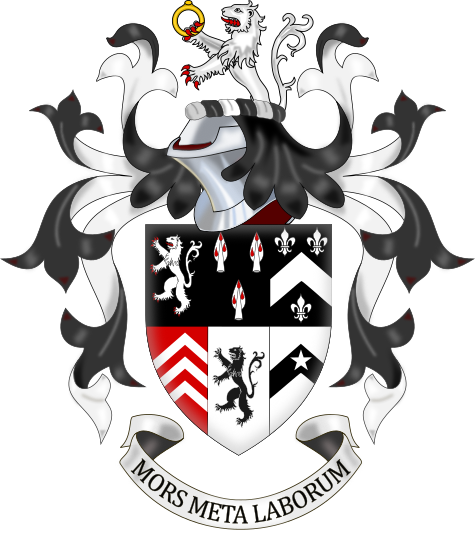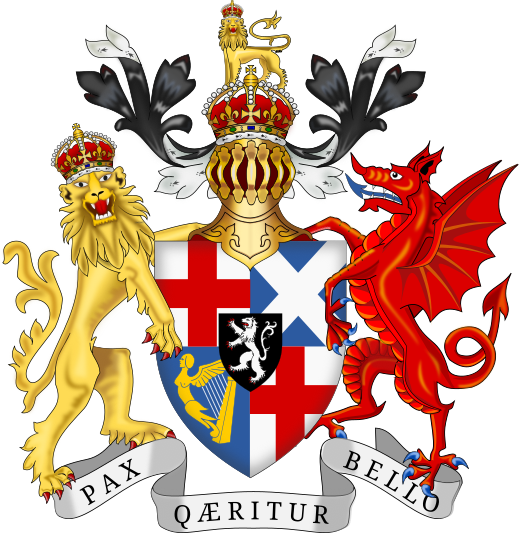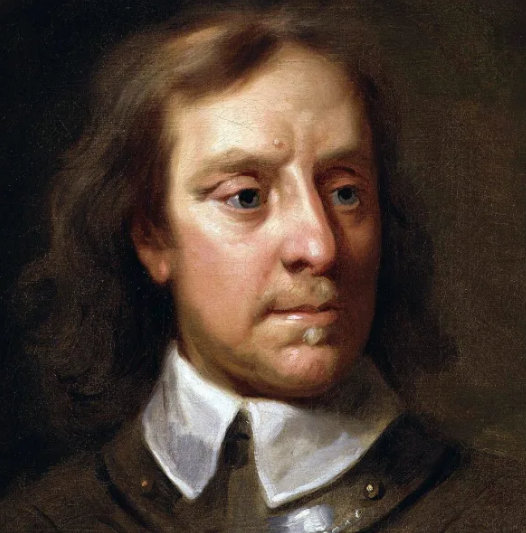 |
BlazonShield: Quarterly of six, 1. Sable, a lion rampant Argent armed and langued Gules (Williams alias Cromwell); 2. Sable, three arrow heads Argent their points imbrued with blood Proper; 3. Sable, a chevron between three fleurs-de-lys Argent; 4. Gules, three chevronels Gules; 5. Argent, a lion rampant Sable; 6. Argent, on a chevron Sable a mullet of the First. Crest: A demi-lion rampant Or holding in the dexter paw a gem ring Or. Motto: Mors Meta Laborum (Death is the goal of our labours). Alternatively: Pax Qæritur Bello (Peace is sought by war) |
Oliver Cromwell (1599-1658) is famous as a parliamentary military leader during the English Civil War, as a signatory of Charles I's death warrant, and as Lord Protector of the Commonwealth from 1653 until his death in 1658. He was created Lord of Gower in 1647.
Although English-born and bearing an English surname, Cromwell's patrilineal roots were in South Wales. His great-grandfather, Richard Williams, was born in Llanishen, Glamorgan, but was a nephew of Henry VIII's famous chief minister, Thomas Cromwell. Williams moved to London and by 1529 had adopted his uncle's surname.
Although Richard Williams took the Cromwell surname, he and his descendants did not adopt Cromwell's coat of arms - they used those of their Welsh ancestors. Oliver Cromwell appears to have used various quarterings of Welsh arms (the ones illustrated appear on a personal seal). The primary arms in all variations were those of "Williams alias Cromwell" - a white lion rampant on a black field. These also appear on his official arms as Lord Protector, placed as an estcutcheon over quarterings of St.George's cross for England, St.Andrew's cross for Scotland, and a gold harp on blue for Ireland. The sinister supporter in these arms was a red dragon of Wales, as used by the Tudor monarchs, rather than the Scottish unicorn which the Stuart monarchs used.
Cromwell visited Swansea briefly in July 1649 en route to Milford Haven.
 |
| The arms of Cromwell as Lord Protector. |
 |
| Oliver Cronwell, after a painting by Samuel Cooper, 1656. |